Google Nexus 9: Preliminary Findings
by Joshua Ho on November 3, 2014 1:00 PM ESTGPU Performance
Following along the same lines, we can also take a look at the GPU performance of Tegra13x in the Nexus 9. This really shouldn’t change too much though as the same GPU is used at the same maximum clock speed of 852 MHz. For those that are unfamiliar with the GPU in the Tegra K1, this is effectively a scaled-down version of their desktop Kepler GPUs.

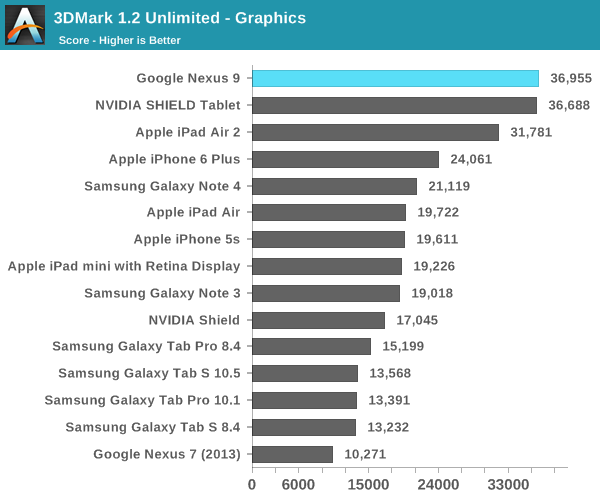
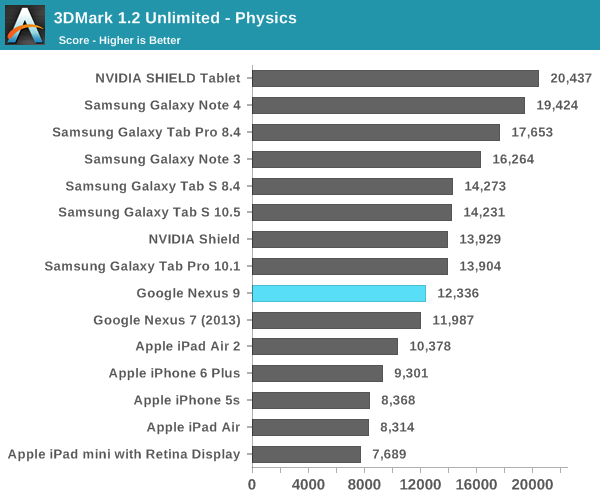
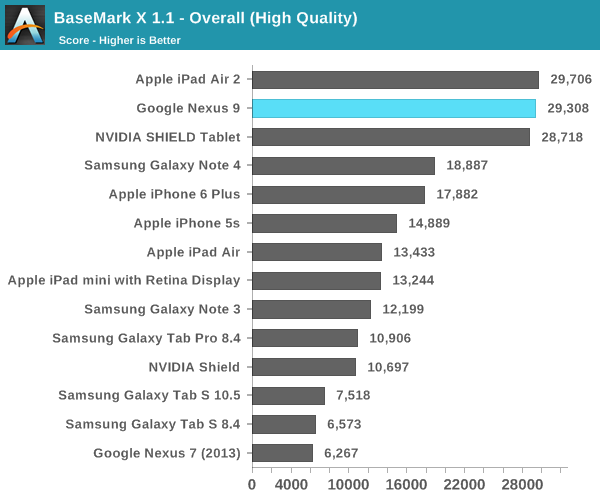
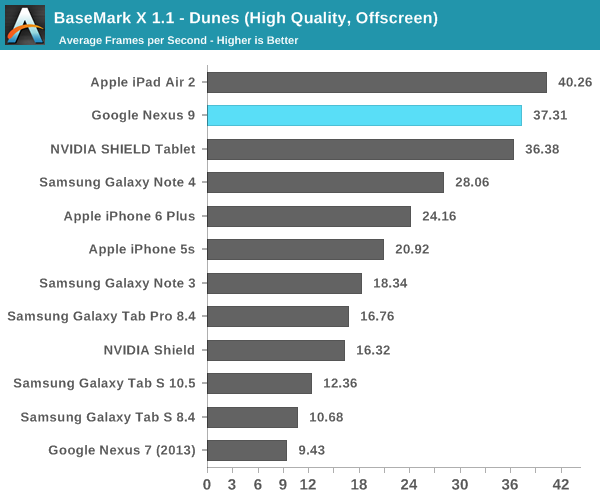
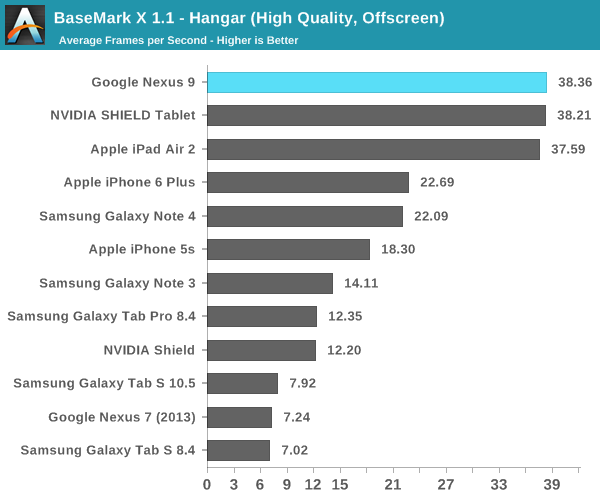
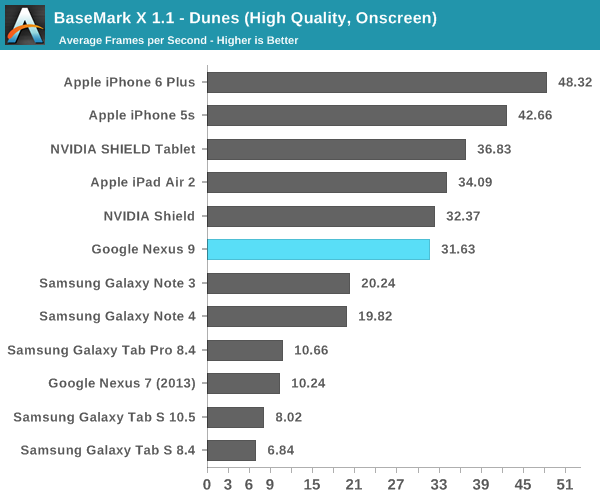

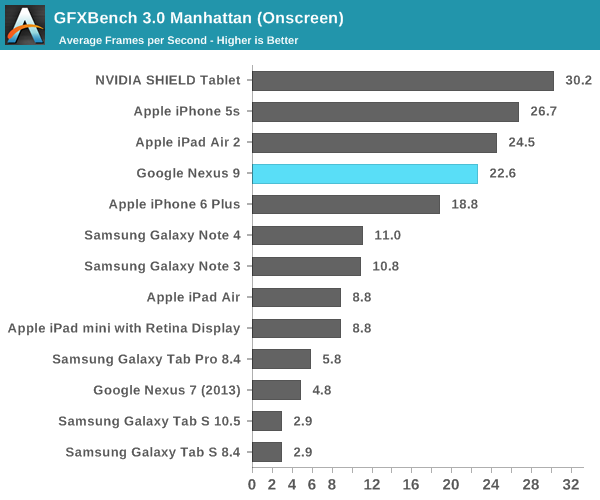
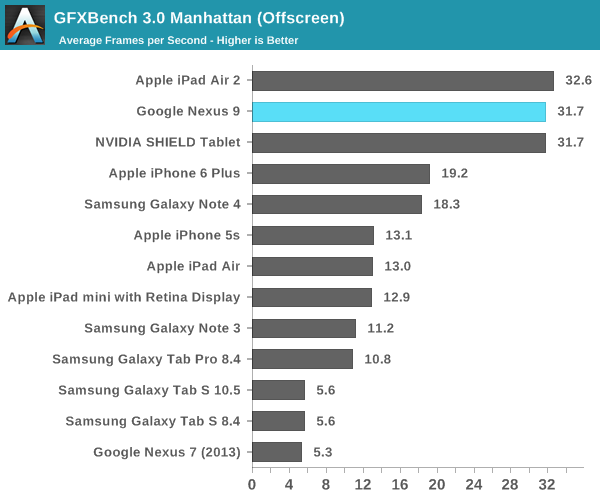
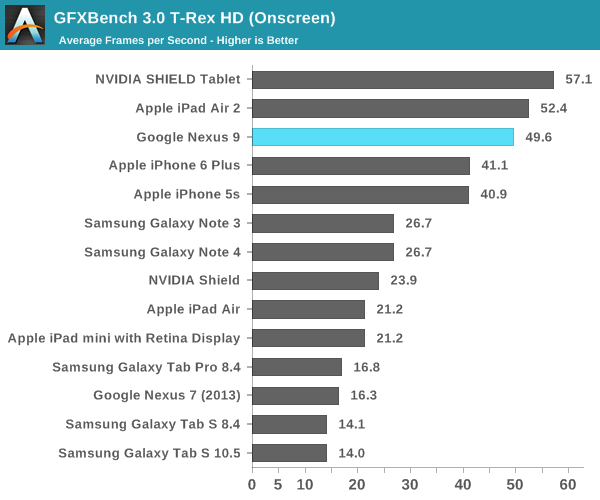
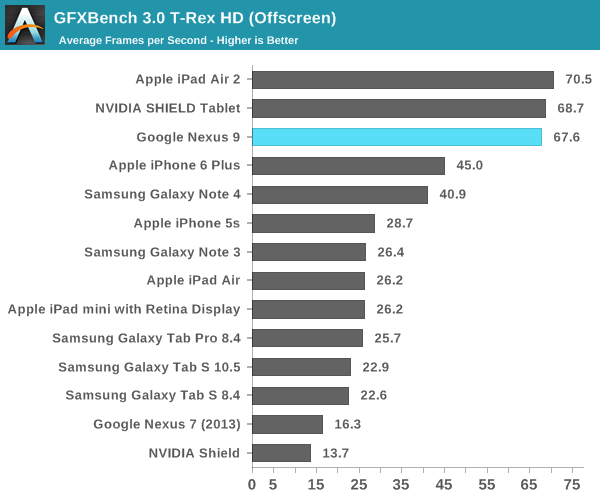
As one can see, the Nexus 9 is effectively equivalent to the SHIELD Tablet in GPU performance. The one anomaly here is 3DMark, which seems to be mostly due to differences in CPU. It's likely that this isn't representative of performance though, as 3DMark's physics test seems to perform better on CPU configurations that rely on larger numbers of cores and higher clock speeds. In the purer GPU tests like Basemark X and GFXBench performance across the board is effectively identical to the Cortex A15 variant of the Tegra K1.
Initial Conclusions
For the most part, the Nexus 9 shows some level of promise as a tablet. While Denver in NVIDIA’s Tegra K1 is a bit bimodal in performance, with sufficient optimization it has immense promise from a sheer performance aspect. While the SoC alone makes the Nexus 9 a fascinating device to look at, the rest of the package has a great deal of potential. The minimalistic design of the device, combined with good material design and stereo front-facing speakers really shows the high-end aspirations of this tablet. While we haven't received anything in the way of accessories, the keyboard folio case seems to be a way of pushing the tablet formfactor in a new direction. This is especially evident when seeing the focus on previous Nexus tablets which seemed to assume touch-only input.
While only a first look, there’s definitely a lot to be impressed by here. However, it will take a full review to really determine whether the Nexus 9 can compete with the iPad Air 2 as a tablet is more than just a function of battery life and SoC performance. In addition, it's hard to draw any real conclusions about this tablet quite yet as the software we received in no way represents a shipping build. Even if inactive, loggers and debug tools generally reduce performance, and it's likely that a great deal of optimization has occurred in the two months since this software build was completed. Once again, we haven't been able to get a newer build, but the full review should be done with shipping firmware.










146 Comments
View All Comments
tipoo - Monday, November 3, 2014 - link
This has always been the way, never the first review out, but almost always the most in depth.esterhasz - Monday, November 3, 2014 - link
OK, preliminary numbers, no fast conclusions. But I can't help feeling that the shield tablet looks actually pretty attractive in that lineup.melgross - Monday, November 3, 2014 - link
I really had expected a typical full iPad Air2 review before this. I can't understand what's taking so long.It would be more interesting to see full reviews of both already. Include the latest Full sized Samsung model.
Krysto - Monday, November 3, 2014 - link
I wish Anandtech would stop focusing so much on Sunspider. Google said it 2-3 years ago that they aren't focusing Chrome on Sunspider performance anymore because it's a very simplistic test without much relation to real-world web app performance. They even did a 50xSunspider test to prove how hopefully obsolete it is, if some of you remember.The Basemark OS benchmarks are all over the place. In some it tests twice as good as the iPad, in others half as flow. I don't think Basemark OS has its algorithms well optimized, and it may give some subcomponents way more score than they deserve, or way too little in others - or Basemark OS may simply be acting weirdly with this new processor.
melgross - Monday, November 3, 2014 - link
Kraken seems to give the same relative performance results with the same ordering of devices, so it doesn't seem to make much difference which one they use.danbob999 - Monday, November 3, 2014 - link
javascript benchmarks are all useless to benchmark hardware. They were created to benchmark software (javascript engines)melgross - Monday, November 3, 2014 - link
It's not just benchmarks g hardware. It's benching the OSs and the browser engine too. So it does matter. Besides, as I said, since Kracken scores seem to follow the Sunspider scores in ranking, it doesn't matter than much.darkich - Tuesday, November 4, 2014 - link
Exactly.My Note 3 scores 570ms in Samsung browser, while Chrome manages only around 1100ms
arsjum - Monday, November 3, 2014 - link
Are we reading the same chart? In Sunspider chart, Nexus 9 is well below iPad Air, whereas in Kraken benchmark, Nexus 9 shows a slightly better score than than iPad Air 2.eiriklf - Monday, November 3, 2014 - link
Sunspider results are far too easy to optimize for in the browser, but it will differ for different architectures. Krait could for instance not really distance itself from cortex a9 in sunspider for a good while on Android.